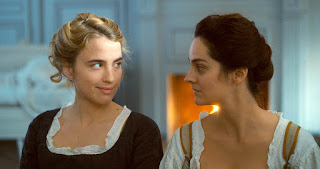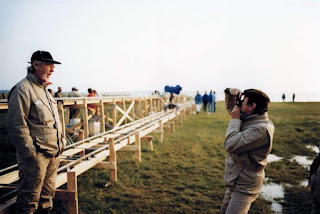Once Upon A Time in Calcutta [2021]: A City, Its Veils, Its Ruins, And Hope
The soundscape of Aditya Vikram Sengupta's Once Upon A Time in Calcutta is so entrenched in immersion that for a moment, it would be a hard thing to believe that it isn't an original soundtrack- the score which pulsated the proceedings throughout was a composition for his debut feature film Labour of Love by Aloknanda Dasgupta. The veil of originality is a striking semblance with the film's, and the world's, urban allegories, masking their ruins with an impression of steady progress.
Calcutta is the city in the picture. In Aditya's films, it has always been one. But it isn't the stage where the characters and their dilemmas unfold but a living and breathing giant here. In 2001, the government of West Bengal renamed Calcutta as Kolkata, which is how Bengali community has been pronouncing the name. However, it isn't the slightest oddity that the film, despite settling the grounds into the contemporary city, is named otherwise. It's a cutting critique of the forgotten past which finds itself not at a distance in time.
At a cursory glance, the film is his most conventional- in an interview as well, Aditya describes it as his proper three-act film. However, it isn't necessarily his most conventional. His debut film Labour of Love did follow a structure organically removed from the other independent filmic celebrations of mundanity in Indian cinema, following the patterns of an Iranian short film to depict glimmer of beautiful romance amid grave recession and the everyday compulsions of a couple to make their ends meet literally and figuratively. However, the masterpiece rattles a deeply familiar core. Jonaki on the other hand, was a deeply personal film which changed the foreground from reality to dreamscapes and hence, the abstractism. Once Upon A Time, on the other hand, combines the threads of memory and observation, so the structure certainly is more comfortable but the reality, and the narrative, is far from it.
I can't help but get back to Calcutta, the city. It wears the soul of a broken wall which can't fully disguise itself under the fabric of a wall print. Economically, it dwells on the altar of high development that marks most metropolitan economic centres of the nation. But the breaking dilapidations lie just around the corner. Aditya, with his cinematographer Gökhan Tiryaki (who, unquestionably, was the selling point of the film for being the cinematographer of Nuri Bilge Ceylan) look inwards, and thus, the picture is painted in a starkly ancient manner, as if reimagining the colonial Calcutta in the modern-day Kolkata, with wavelengths of bleak nostalgia assessing the waters of a city where flyovers fall, moralities fall too, and dinosaurs crumble.
The interplay of lights is both impactful and fascinating. Characters slightly and subtly ascend into hope and descend into death (which looms as an adornment for hope itself), and we know it all because the colours and the lights don't exist there just because they should. Love unfolds between characters such as Ela and Shishir, and Raja and his girlfriend. But love turns into an obsession as the dwellers of the city obsess themselves with figures of the past, most prominently Rabindranath Tagore. The irritation of the three film auteur for this Tagore-obsessed deficiency of literature is artistically observed with clever attention throughout, with Tagore busts and a remixed Tagore song playing important parts in themselves.
The performances are terrific. The acting ensures feeling, in moments of grief and laughter both. Anirban Chakraborty, as the lustful builder Pradipta gets a couple of extremely funny sequences- the bald men discussing hair growth is a classic. Bratya Basu as Bubu, Sattajit Sarkar's Shishir and Shayak Roy's Raja breathe life into these characters. However, it is Sreelekha Mitra who is in her finest form as an actor here. The veteran has done a lot of films and some television in Bengali cinema but this is her moment. As Ela, she represents the mother of the story and the daughter of the circumstances. She feels like Calcutta in a nutshell- nurturing a fading beauty with peace and unsettling affection.
I'm not sure if it's intended or not, but the name Ela itself is as unconventional as the character. Ela is an androgyne deity in Indian Mythology-- perhaps the only one-- whose sex changes with the moon's waxing and waning, like Ela herself, her sadness and joy acting like a lamp which burns and extinguishes. This is one of the many intelligent storytelling choices here. AVS's storytelling cannot be described in simplistic adjectives such as 'brilliant' and 'excellent', primarily because it resists those and secondarily because, well, it shouldn't be. This is storytelling at its most purest. That doesn't mean that it chooses to be explicitly ascetic, there are sexual tensions here, but the discipline is magnificent. The rhythms are particularly affecting in a very moving scene, the one with mosquitoes interrupting a commercial show and especially in the hauntingly beautiful climax.
Once Upon A Time in Calcutta doesn't choose to dwell over the ruins. After all, escaping the reality is not so much of an option as an illusion. Artistically painting the reality most certainly is. And that's what Aditya achieves here. Playing at Venice Film Festival, this is the finest Indian film of the year and a stirring revelation that's also relevant.





Wonderfully Written. Waiting for this one
ReplyDelete